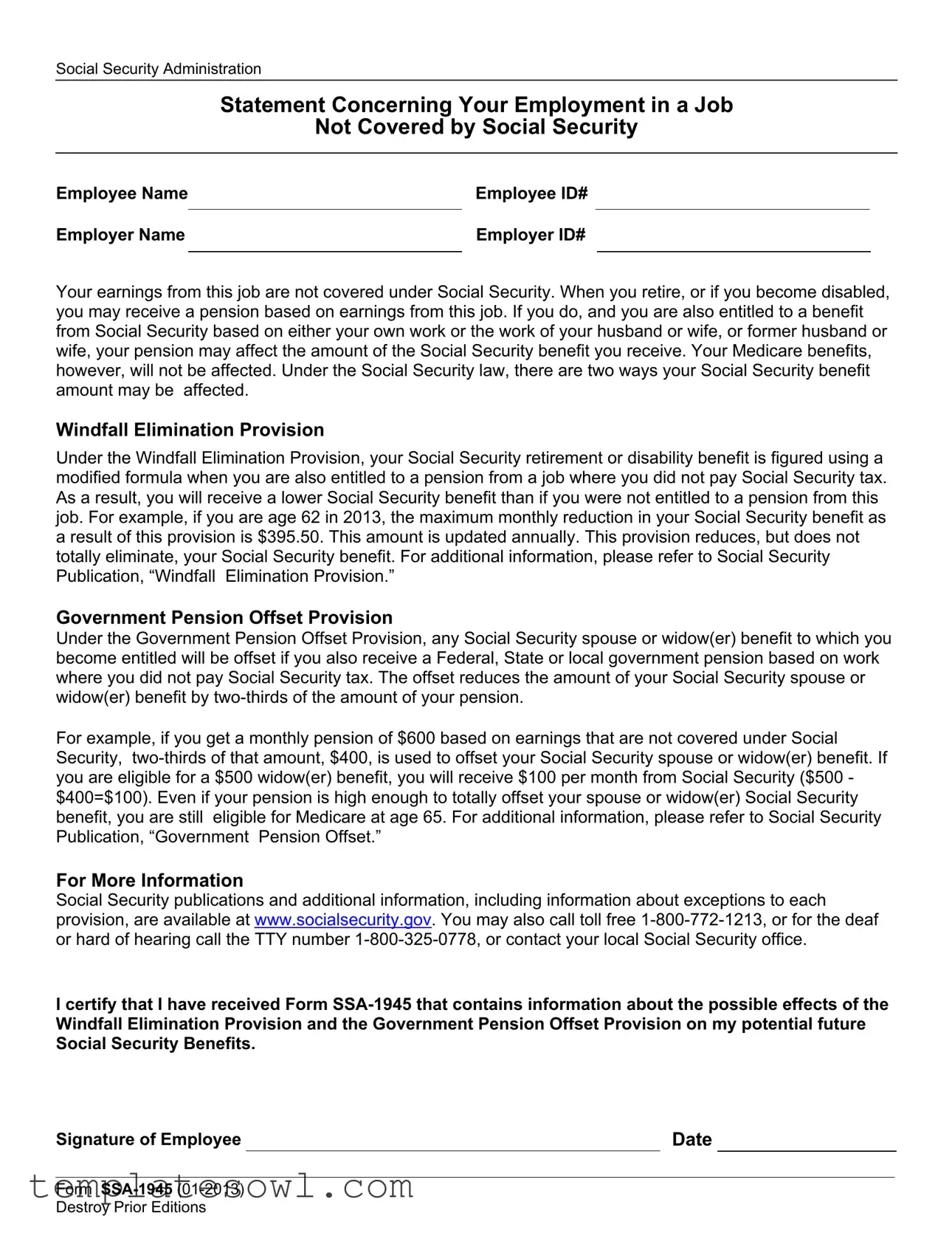What is Form SSA-45?
Form SSA-45, or Statement Concerning Your Employment in a Job Not Covered by Social Security, is a document issued by the Social Security Administration. It helps explain to employees how working in jobs that do not contribute to Social Security may influence their future benefits. This form is especially important for those who may receive a pension from such jobs.
Who needs to fill out Form SSA-45?
Employees who work in jobs not covered by Social Security should complete Form SSA-45. Employers must provide this form to new hires in such positions. This requirement applies to all state and local government workers who started on or after January 1, 2005.
How does my pension affect my Social Security benefits?
Your pension from a job not covered by Social Security can affect your benefits in two significant ways: through the Windfall Elimination Provision and the Government Pension Offset Provision. Each provision reduces the amount of your Social Security benefits to some extent, depending on your pension amount and eligibility for other benefits.
What is the Windfall Elimination Provision?
The Windfall Elimination Provision adjusts how your Social Security retirement or disability benefits are calculated if you also receive a pension from a job where you didn’t pay Social Security taxes. This means you may end up receiving a lower Social Security benefit. The reduction changes annually, so staying informed is crucial.
What is the Government Pension Offset Provision?
This provision affects any Social Security spousal or widow(er) benefit you may be entitled to if you also receive a government pension from work not covered by Social Security. Specifically, two-thirds of your pension amount will reduce your spouse or widow(er) benefit. Even if your pension offsets your benefit completely, you can still receive Medicare benefits at age 65.
Why do I need to sign the form?
Signing the form indicates that you understand how your employment and potential pension may affect your future Social Security benefits. It ensures that you are aware of the implications before making retirement decisions or planning for disability benefits.
Can I get a copy of the SSA-45 online?
Yes, you can access Form SSA-45 online at the Social Security Administration's website. Just look for the online version at www.socialsecurity.gov/online/ssa-1945.pdf. If you prefer paper copies, you can request them via email or fax from the Social Security Administration. Keep in mind they come in packages of 25.
What should my employer do with the completed form?
Once you complete and sign the SSA-45, your employer is responsible for keeping it on file. They must also submit a copy to the pension-paying agency as part of their compliance with Social Security regulations.
Where can I find more information?
For further details, you can check the Social Security website at www.socialsecurity.gov or reach out directly by calling 1-800-772-1213. If you're deaf or hard of hearing, you can use the TTY number 1-800-325-0778.


